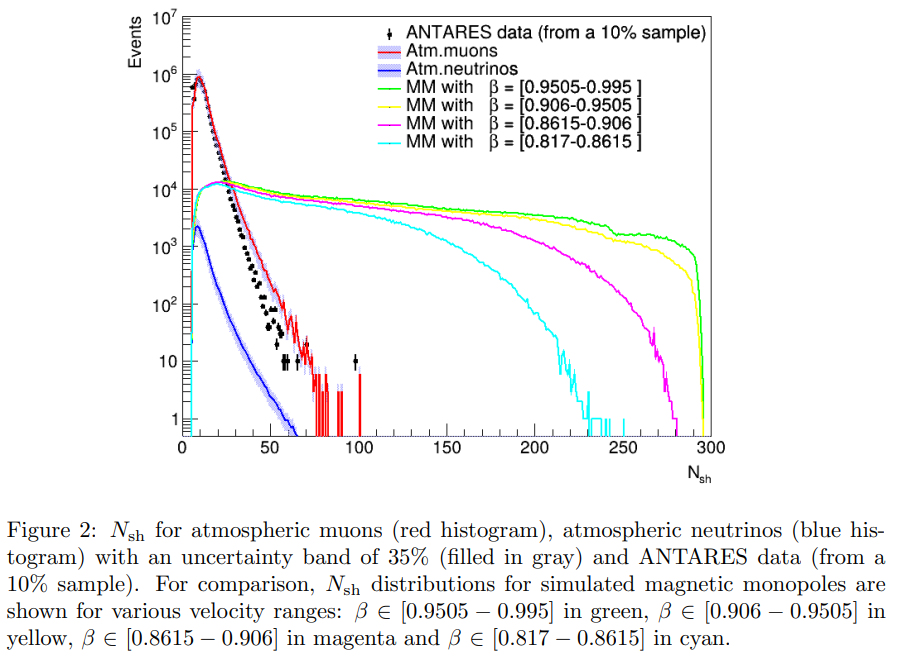June 2nd, 2025
CMS-SMP-24-015
A measurement is presented of the cross section in proton-proton collisions for the production of two W bosons and one Z boson. It is based on data recorded by the CMS experiment at the CERN LHC at center-of-mass energies √s = 13 and 13.6 TeV, corresponding to an integrated luminosity of 200 fb-1. Events with four charged leptons (electrons or muons) in the final state are selected. Both nonresonant WWZ production and ZH production, with the Higgs boson decaying into two W bosons, are reported. For the first time, the two processes are measured separately in a simultaneous fit. Combining the two modes, signal strengths relative to the standard model (SM) predictions of 0.75+0.34-0.29 and 1.74+0.71-0.60 are measured for √s= 13 and 13.6 TeV, respectively. The observed (expected) significance for the triboson signal is 3.8 (2.5) standard deviations for √s= 13.6 TeV, thus providing the first evidence for triboson production at this center-of-mass energy. Combining the two modes and the two center-of-mass energies, the inclusive signal strength relative to the SM prediction is measured to be 1.03+0.31-0.28, with an observed (expected) significance of 4.5 (5.0) standard deviations.
CMS-SMP-24-015
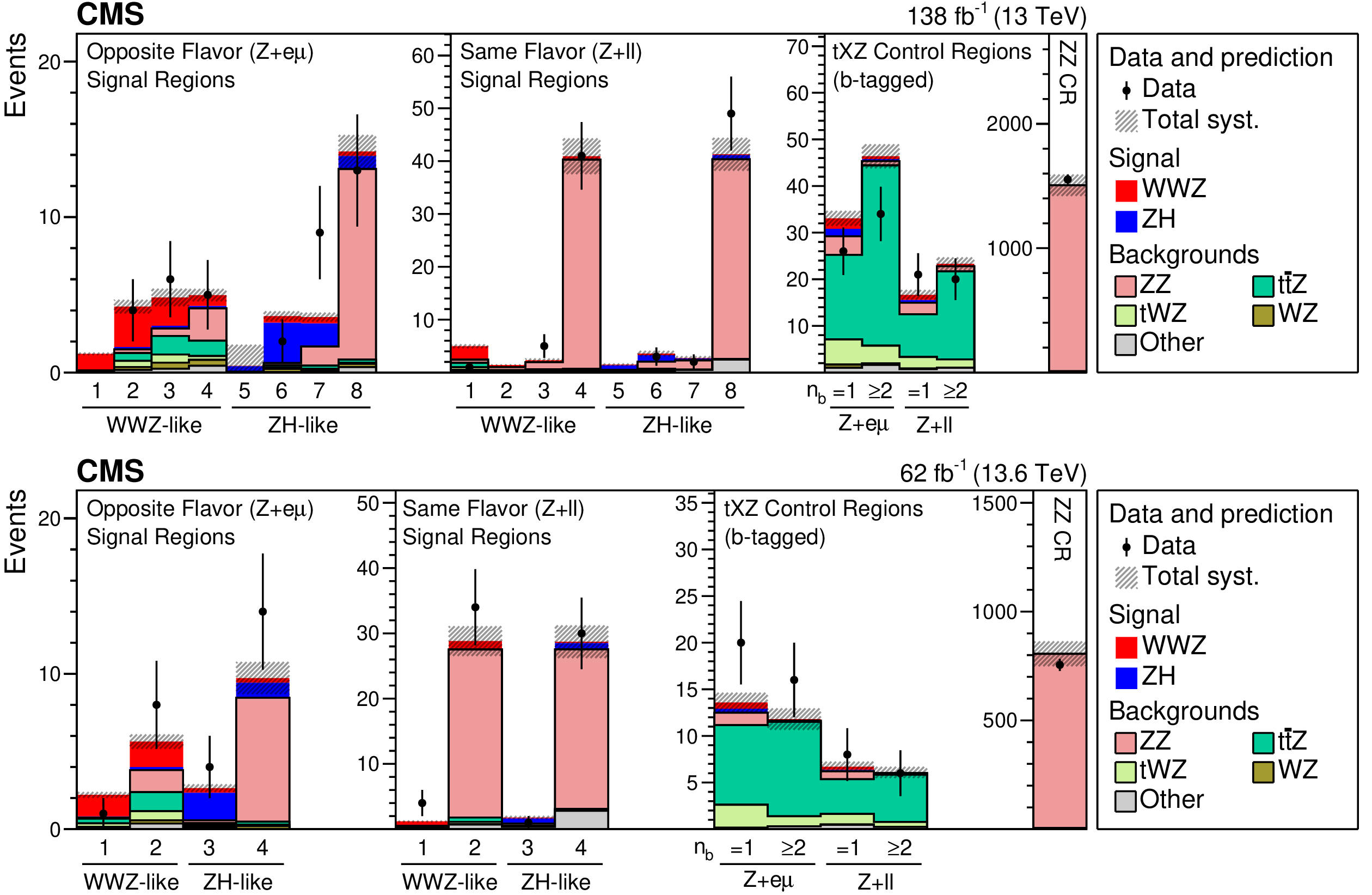
CMS-SMP-24-015
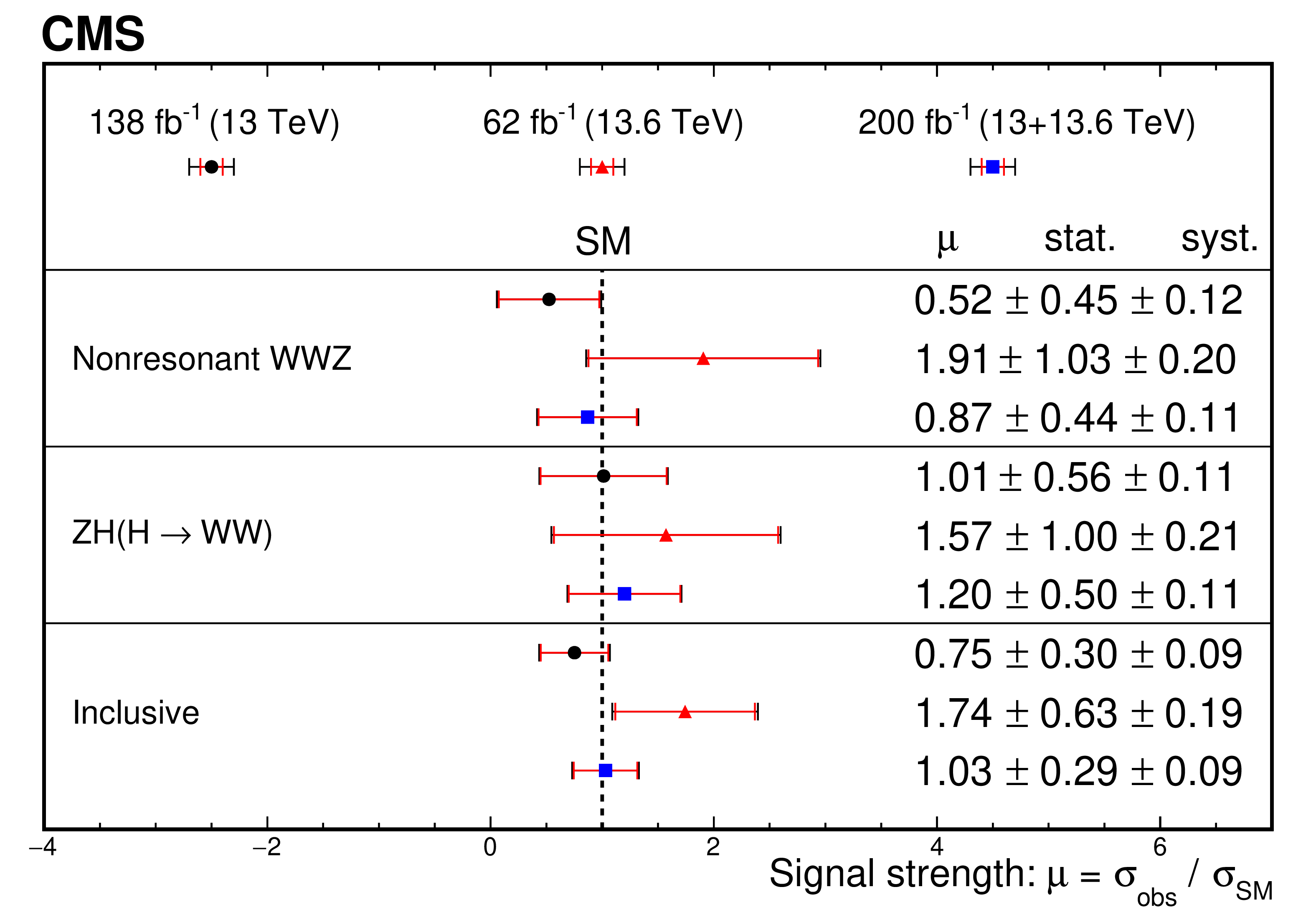
CMS-TOP-24-012
A search for the violation of the charge-parity (CP) symmetry in the production of top quarks in association with Z bosons is presented, using events with at least three charged leptons and additional jets. The search is performed in a sample of proton-proton collision data collected by the CMS experiment at the CERN LHC in 2016-2018 at a center-of-mass energy of 13 TeV and in 2022 at 13.6 TeV, corresponding to a total integrated luminosity of 173 fb-1. For the first time in this final state, observables that are odd under the transformation are employed. Also for the first time, physics-informed machine-learning techniques are used to construct these observables. While for standard model (SM) processes the distributions of these observables are predicted to be symmetric around zero, -violating modifications of the SM would introduce asymmetries. Two CP-odd operators OtWI and OtZI in the SM effective field theory are considered that may modify the interactions between top quarks and electroweak bosons. The obtained results are consistent with the SM prediction within two standard deviations, and exclusion limits on the associated Wilson coefficients of 2.7<ctWI<2.5 and 0.2<ctZI<2.0 are set at 95% confidence level. The largest discrepancy is observed in where data is consistent with positive values, with an observed local significance with respect to the SM hypothesis of 2.5 standard deviations, when only linear terms are considered.
CMS-TOP-24-012

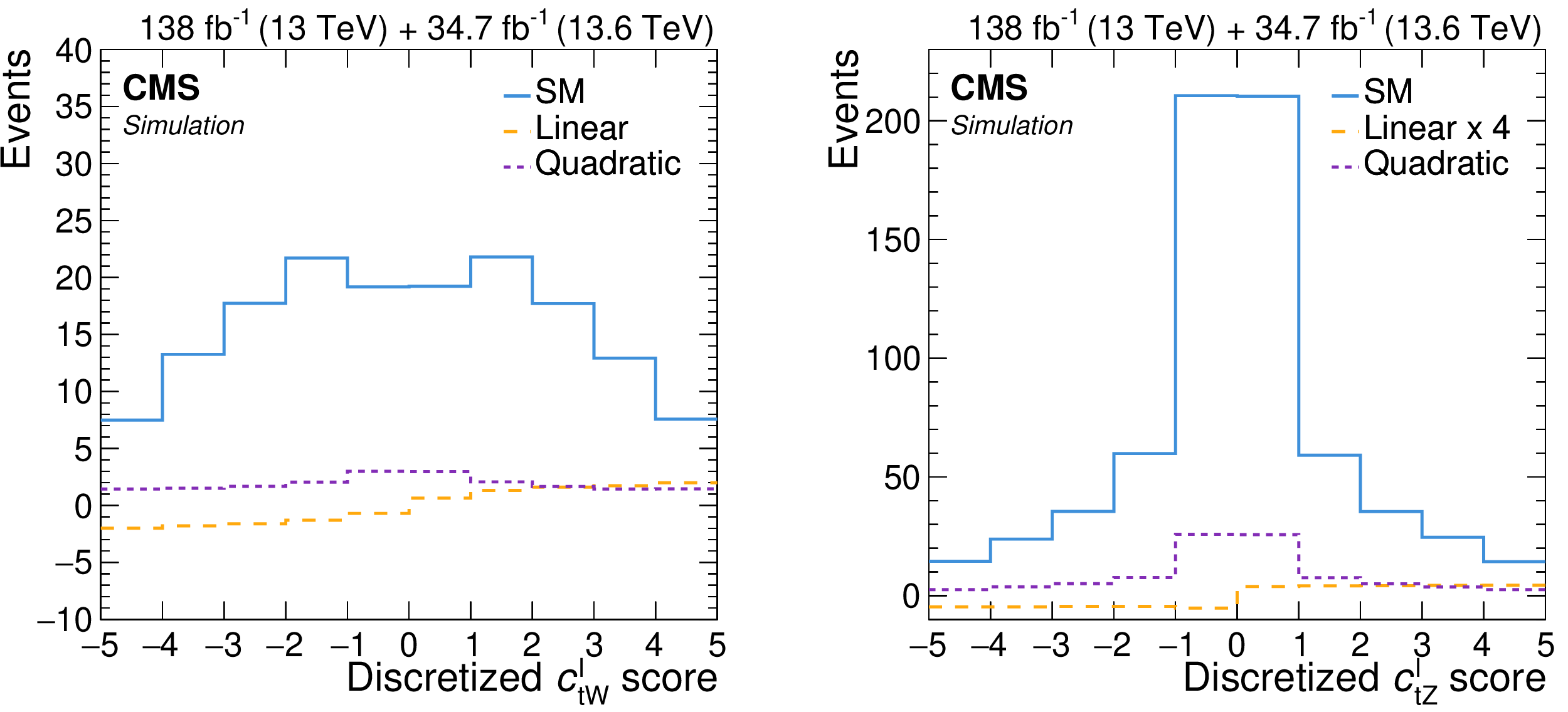
CMS-TOP-24-012

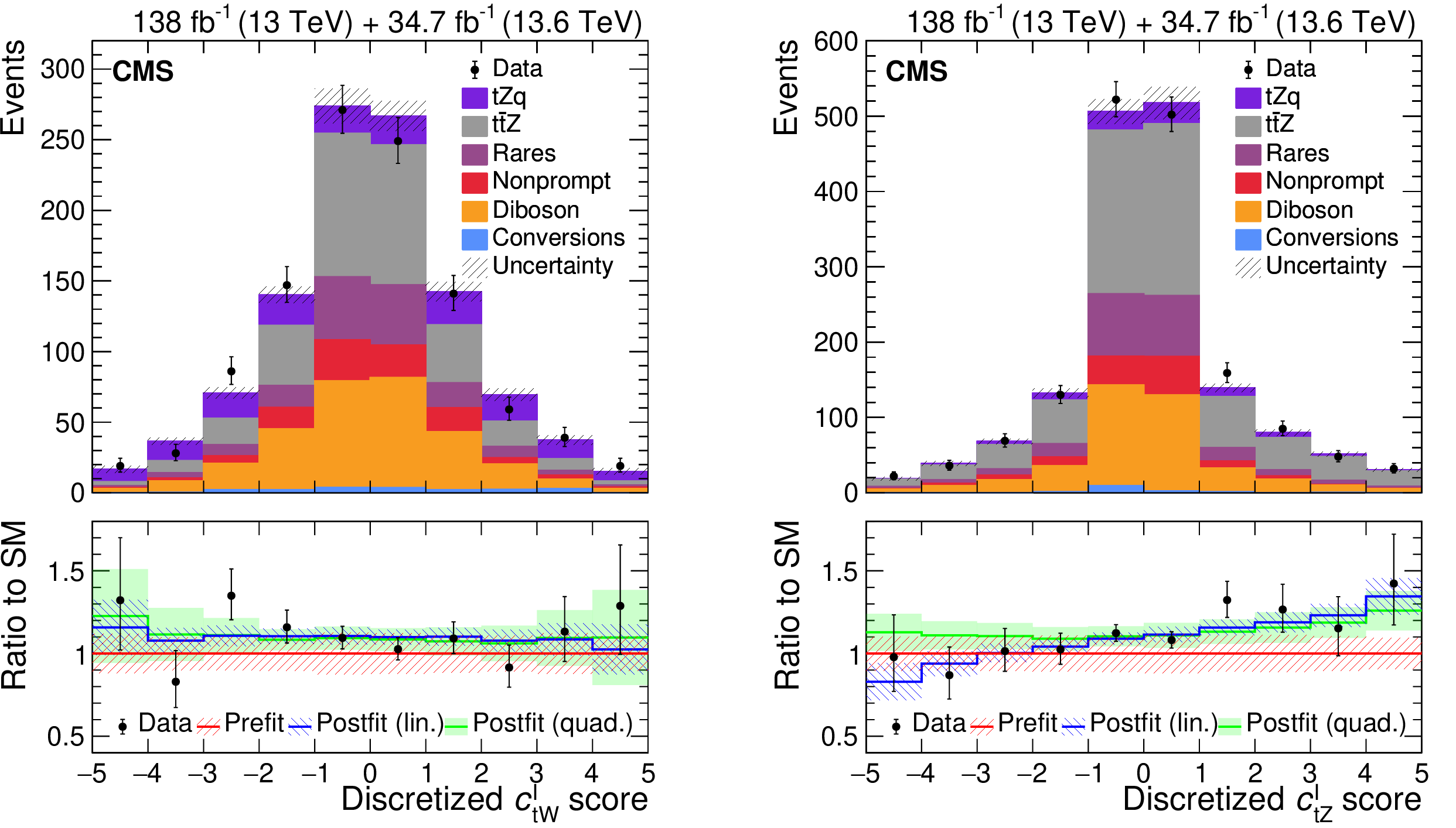
CMS-SMP-23-008
A measurement of event-shape variables is presented, using a data sample produced in a special run with approximately one inelastic proton-proton collision per bunch crossing. The data were collected with the CMS detector at a center-of-mass energy of 13 TeV, corresponding to an integrated luminosity of 64 μb-1. A number of observables related to the overall distribution of charged particles in the collisions are corrected for detector effects and compared with simulations. Inclusive event-shape distributions, as well as differential distributions of event shapes as functions of charged-particle multiplicity, are studied. None of the models investigated is able to satisfactorily describe the data. Moreover, there are significant features common amongst all generator setups studied, particularly showing data being more isotropic than any of the simulations. Multidimensional unfolded distributions are provided, along with their correlations.
CMS-SMP-23-008
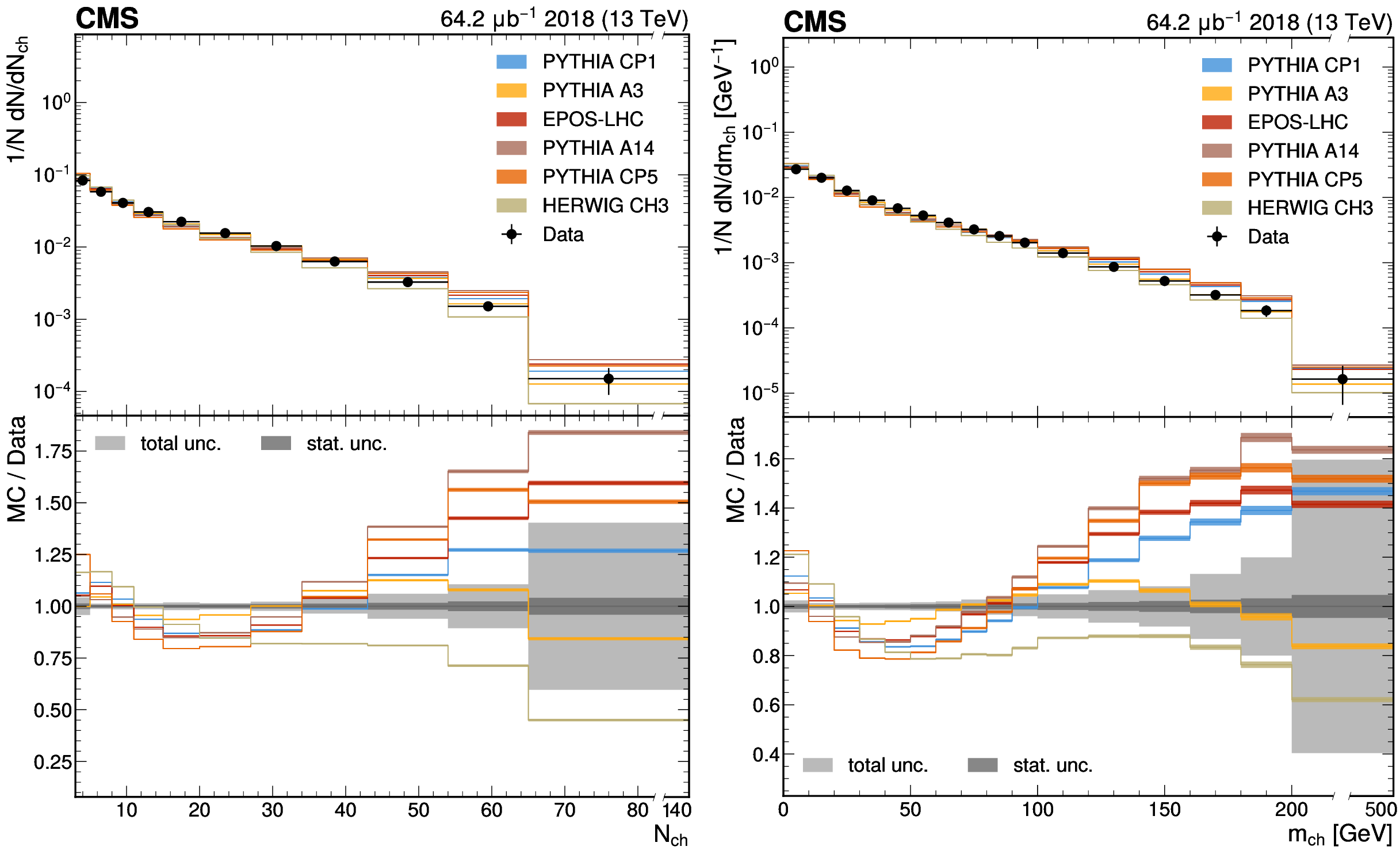
CMS-SMP-23-008
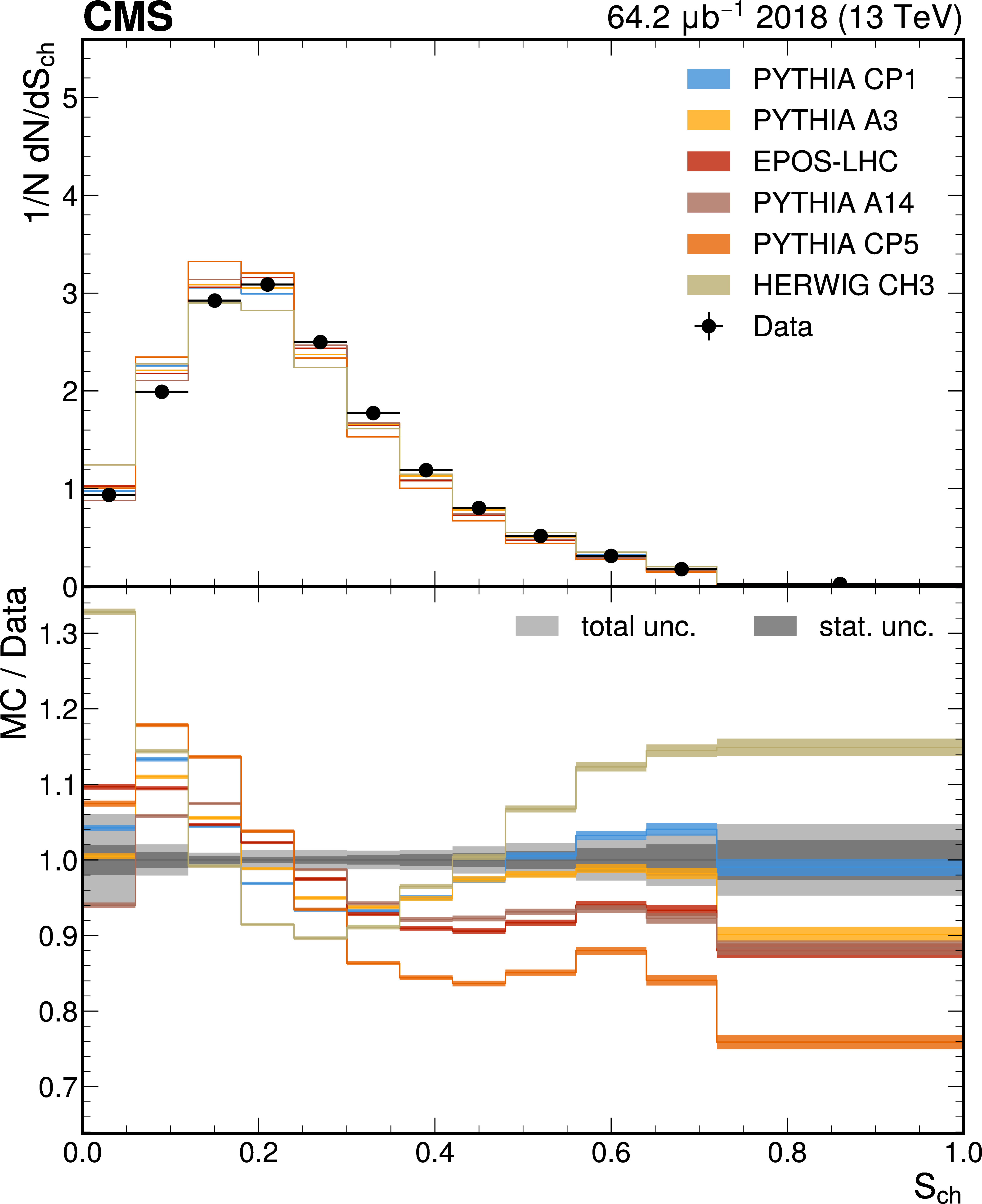
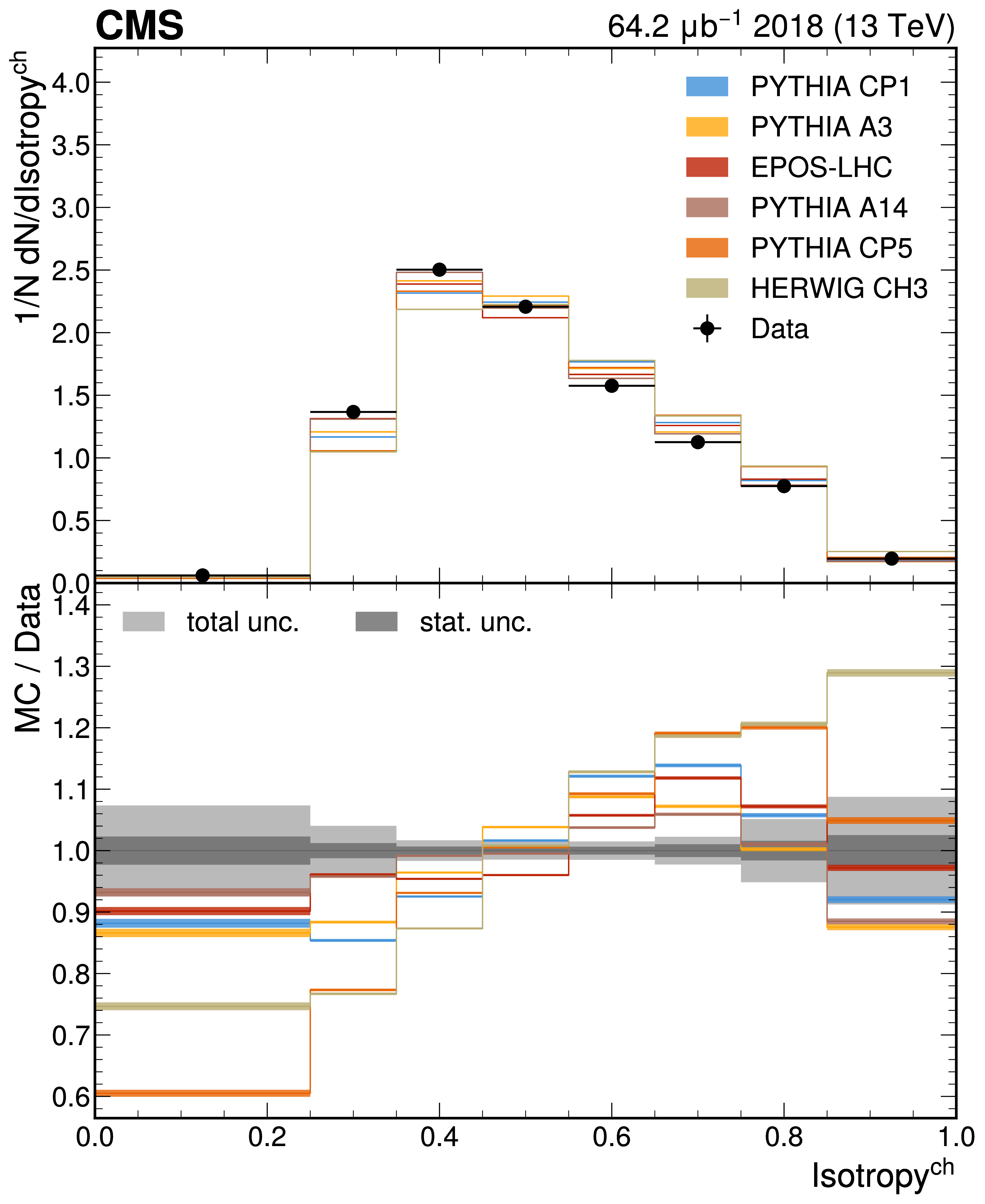
A. Georgadze
This study evaluates the potential of muon tomography as a non-invasive technique for detecting concealed illicit drugs in cargo, based on detailed simulations performed using the GEANT4 toolkit. A combined analysis of muon scattering and absorption data was employed to enhance material discrimination, with a focus on realistic smuggling scenarios involving cocaine hidden within legitimate cargo. A two-stage inspection protocol is proposed to balance detection speed and resolution. In the first stage, a rapid scan lasting 60 seconds is used to identify anomalous scattering and absorption rates, without requiring full tomographic reconstruction. Upon detection of anomalies, an extended scan ~30 minutes is initiated to enable high-resolution three-dimensional imaging for accurate localization and identification of hidden materials. Simulation results demonstrate that, with a detector spatial resolution of 1 mm (FWHM), concealed contraband such as cocaine can be detected with approximately 3 sigma statistical significance during the rapid scan phase. In extended scans, cocaine packages concealed within banana boxes were successfully visualized and automatically identified using clustering algorithms such as DBSCAN applied to the tomographic reconstruction. These findings confirm the feasibility of cosmic-ray muon tomography as a passive, safe, and effective approach for contraband detection in real-world cargo inspection applications.
PADME Collab.
The PADME Experiment at the Frascati DANE LINAC has searched for a hypothetical particle with mass around 17 MeV, commonly referred to as the X17, using a positron beam incident on a fixed target. The beam energy was varied between 262 and 296 MeV, corresponding to center-of-mass energies √s between 16.4 and 17.4 MeV. The X17 should be produced resonantly via e+e- annihilation when √s approaches its mass, inducing an excess of events with a two-body final state over the background expectation. The beam energy spacing was fixed to less than half the expected width of the resonance's line shape. Uncertainties below 1% per √s point were achieved. A blind analysis has been performed. The data are consistent with the expected background in most of the explored energy range, and limits are set in previously unexplored regions of the available parameter space. The most significant deviation is found for √s ~ 16.9 MeV, corresponding to a global significance of approximately 2 standard deviations over the null hypothesis expectation.
PADME Collab.
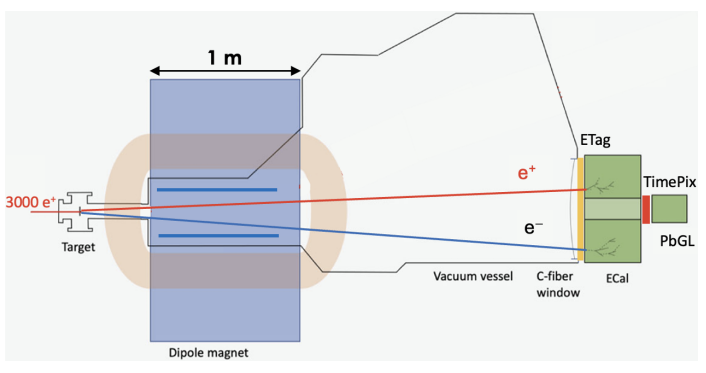
PADME Collab.
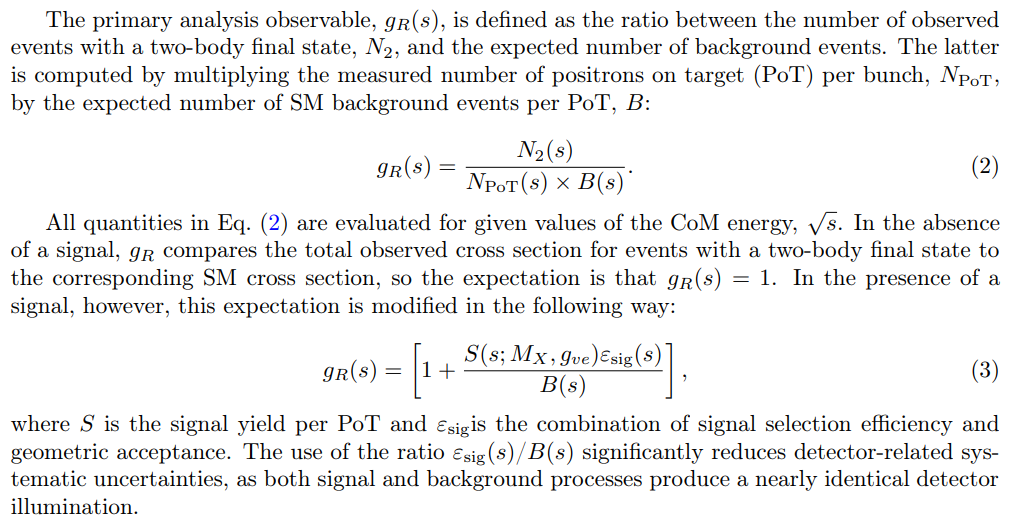
PADME Collab.
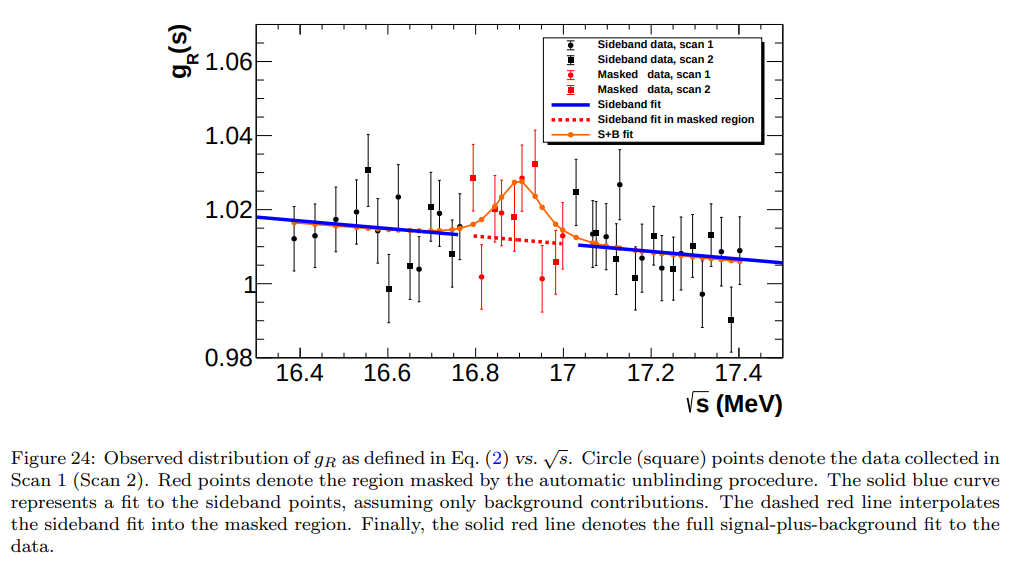
A. Albert et al
This study presents a novel search for magnetic monopoles using data collected over a 14 year period (2008-2022) by the ANTARES neutrino telescope. The interaction of magnetic monopoles with matter was modeled according to Kazama, Yang, and Goldhaber cross-section. Upper limits on the flux of magnetic monopoles are obtained for velocities both above and below the Cherenkov threshold. No events consistent with the passage of magnetic monopoles were detected, enabling the setting of an upper flux limit for relativistic magnetic monopoles of the order of 10-18 cm-2 s-1 sr-1 .
A. Albert et al
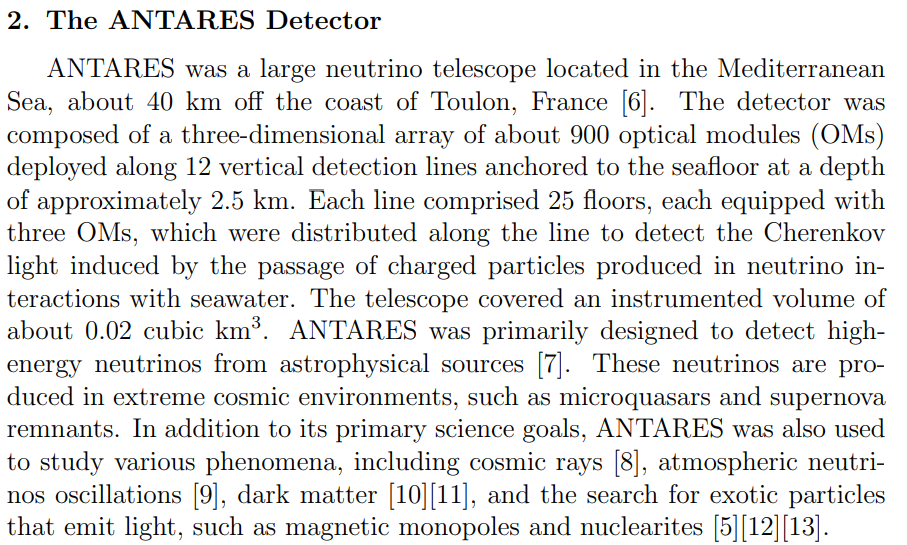
A. Albert et al
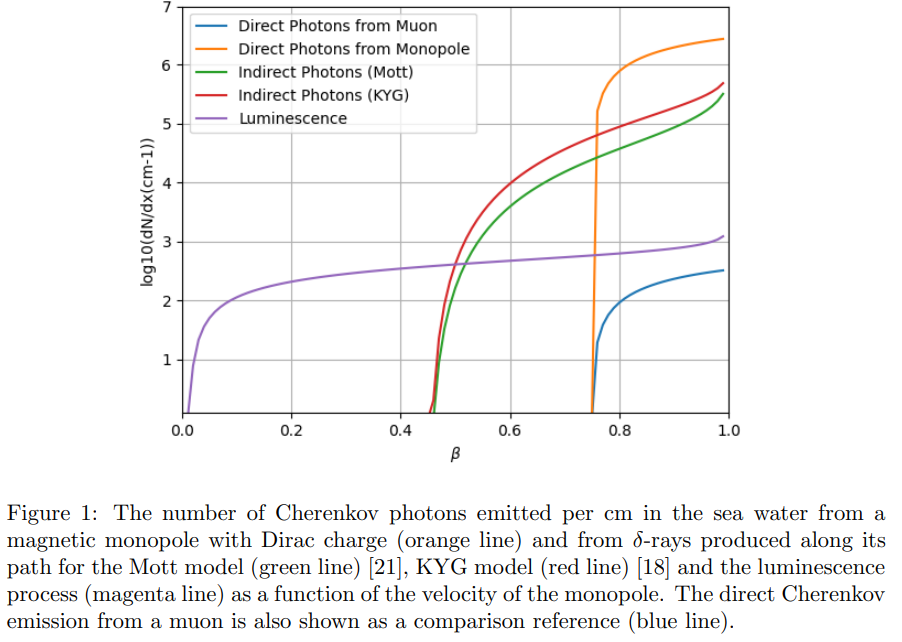
A. Albert et al
